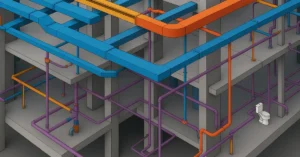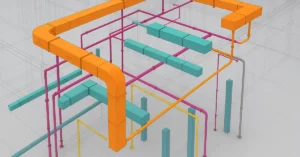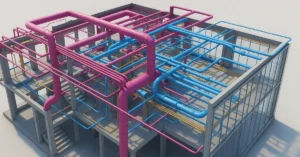Stunning Brutalist Buildings in Tel Aviv: Architectural Powerhouses
Tel Aviv is renowned worldwide for its Bauhaus heritage, but hidden among its streets lies another powerful architectural story — the city’s brutalist buildings. These structures are bold, unapologetically raw, and have shaped the city’s urban landscape in ways that merge functionality with expressive concrete artistry.
Brutalism in Tel Aviv offers a unique window into the city’s post-independence growth, reflecting the social, political, and cultural aspirations of Israel during the mid-20th century. In this blog, we dive deep into the most iconic brutalist buildings in Tel Aviv, their historical significance, architectural features, and their place in the city’s evolving skyline.
Understanding Brutalism in Tel Aviv’s Context
Brutalism as a style emerged globally during the 1950s through the 1970s, characterized by exposed concrete surfaces, massive forms, and a focus on function over formality. In Tel Aviv, this movement coincided with a period of rapid development as Israel was building its modern identity.
The city’s brutalist structures often served public functions—government buildings, cultural centers, and social housing—embodying ideals of transparency, strength, and modernity. Yet, they also tell stories of practical needs, economic constraints, and local adaptations, resulting in a uniquely Israeli take on brutalism.
1. Tel Aviv’s Central Bus Station
One of the most massive brutalist constructions in the city, the Central Bus Station embodies the complexity and ambition of Tel Aviv’s infrastructure growth. Known for its labyrinthine interior and bold concrete facade, the station has become a controversial but undeniable landmark in the city.
Built in the 1990s, it features expansive concrete volumes, repetitive geometric forms, and a functional design meant to handle millions of commuters annually. Despite criticism for its overwhelming scale, it remains a vital piece of urban infrastructure.
2. Shalom Meir Tower (Early Brutalist Elements)
Completed in 1965, the Shalom Meir Tower, while primarily modernist, exhibits strong brutalist tendencies in its raw concrete and bold geometric silhouette. It was once the tallest building in the Middle East and marked a turning point in Tel Aviv’s architectural ambitions.
Its verticality and exposed structural elements illustrate brutalism’s influence in shaping Israel’s first high-rise skyline.
3. Tel Aviv Museum of Art (New Wing by Preston Scott Cohen)
While the original building dates back to the 1930s, the museum’s newer brutalist-inspired wing features concrete-heavy design that blends artistic form with raw materials. The interplay of heavy concrete with light-filled spaces makes this an exceptional example of brutalism serving cultural and aesthetic purposes.
4. The IDF Headquarters (Kirya Complex)
The Kirya complex, housing Israel Defense Forces headquarters, is a fortress-like brutalist structure. Massive concrete walls and blocky volumes emphasize security and strength, reflecting the functionalist and symbolic elements of brutalism in a politically charged environment.
5. Lev Ha’ir Tower
This office tower incorporates brutalist design through its use of raw concrete and repetitive window patterns. It stands as a testament to Tel Aviv’s economic development during the 1970s and 1980s, combining brutalism with practical commercial functionality.
6. Public Housing in Florentin District
Florentin’s public housing blocks are classic brutalist expressions adapted to social needs. Built in the mid-20th century, these structures feature raw concrete, exposed infrastructure, and geometric repetition — stark but functional homes aimed at accommodating a rapidly growing population.
Why Brutalism Resonated in Tel Aviv
Tel Aviv’s brutalist movement was driven by multiple factors: post-war housing needs, governmental institutions asserting new national identity, and architects experimenting with international modernist trends while responding to local climate and social conditions.
Brutalism’s emphasis on durability and honesty in materials made it attractive in a city constantly evolving and facing regional challenges. The style’s monumental and fortress-like forms often symbolized resilience and progress.
Public Reception and Preservation
Brutalist architecture in Tel Aviv is polarizing. Many admire its boldness and raw beauty, while others critique it as harsh or outdated. Preservation efforts are growing as awareness rises about the cultural value of these concrete giants.
Tourism and architectural tours often highlight these buildings as integral to understanding Tel Aviv’s layered urban story. Architects and activists work to protect key brutalist landmarks from demolition or insensitive renovation.
Brutalism’s Legacy and Future in Tel Aviv
The brutalist buildings of Tel Aviv remind us of a critical chapter in the city’s development—a time when concrete was king and architectural expression was tightly linked with national identity. As Tel Aviv modernizes, balancing preservation with new development will be essential.
Adaptive reuse of brutalist structures for cultural centers, offices, or residential spaces could ensure these architectural powerhouses remain relevant and celebrated.
Conclusion
Brutalist buildings in Tel Aviv stand as stunning monuments of architectural courage and historical significance. These concrete giants tell stories of a young nation’s ambitions and challenges, blending raw materiality with purposeful design.
Whether loved or criticized, they enrich Tel Aviv’s urban fabric and invite us to appreciate the power of architecture in shaping identity. Next time you explore Tel Aviv, take a moment to look beyond the Bauhaus and discover the stunning brutalist masterpieces that define a city’s bold spirit.
If you’re interested in learning more about architecture firms in Europe, check out this comprehensive list of the top 50 firms compiled by Archgyan. From innovative startups to long-established industry leaders, this list has it all. Take a look and discover some of the most inspiring and influential architecture firms in Europe today.
If you’re interested in architecture and want to learn more about this amazing field, subscribe to our podcast on youtube
For more SketchUp tutorials, head to https://www.sketchupguru.com










